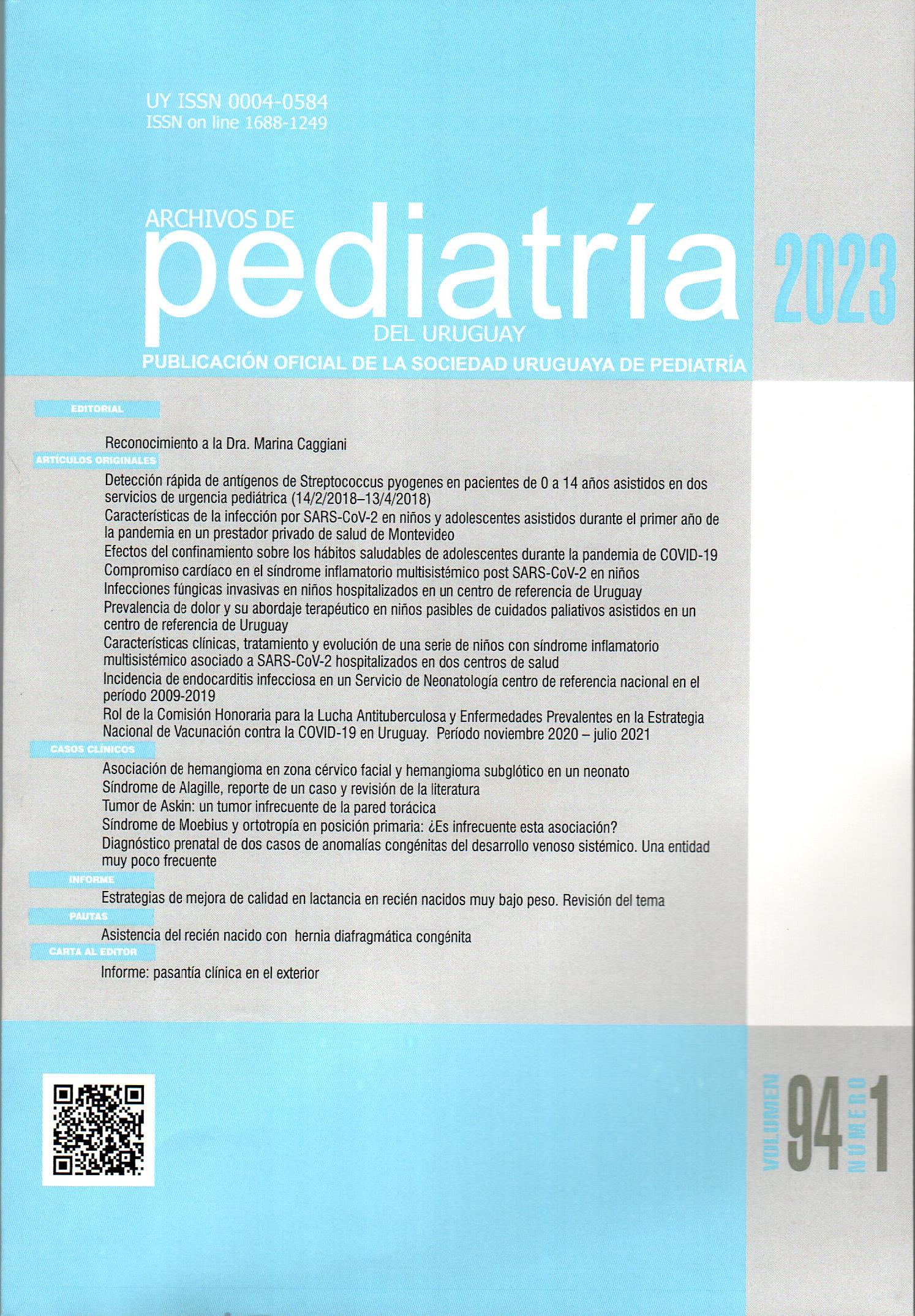Abstract
Introduction: in March 2021, there was a peak incidence of COVID-19 and an increase in pediatric infections in Uruguay.
Objective: describe the clinical characteristics, treatment and evolution of a group of children under 15 years of age with SIM-Ped S hospitalized in two health centers.
Methodology: descriptive, retrospective study of children hospitalized between 3/1 and 6/31 of 2021 who met the WHO diagnostic criteria for SIM-Ped. Clinical and paraclinical variables, as well as treatment and evolution were analyzed.
Results: 12 children were included, median age 7 years (22 months-10 years). Eight of them showed post-infectious complications and 4 of them had complications during the course of the infection. The manifestations were: fever (mean 6 days, range 3-10), digestive symptoms 10 and mucocutaneous 7. Five of them presented a Kawasaki-like disease and 2 of them shock. SARS CoV-2 infection was confirmed by PCR in 6 cases, serology in 4 and antigenic test in 2. Eight of them received treatment in moderate care and 4 of them in intensive care: immunoglobulin 9, corticosteroids 11, heparin 7 and acetylsalicylic acid 7. Two of them presented dilated arteries coronary , valvular alterations 2, decreased LVEF 2 and pericardial effusion 2. All progressed favorably.
Conclusions: in these centers, the first cases of SIMS-Ped S coincided with the peak incidence of COVID-19 in the country. Post-infectious forms predominated in schoolchildren who showed digestive manifestations. This study may contribute to the recognition of this entity and to the adaptation of national management algorithms.

This work is licensed under a Creative Commons Attribution 4.0 International License.
Copyright (c) 2023 Archivos de Pediatría del Uruguay

